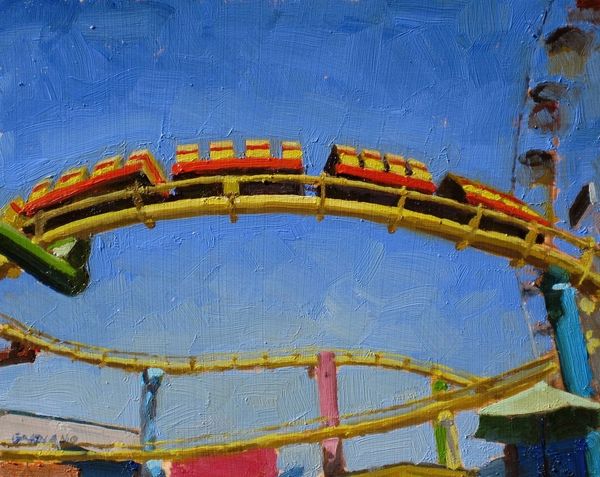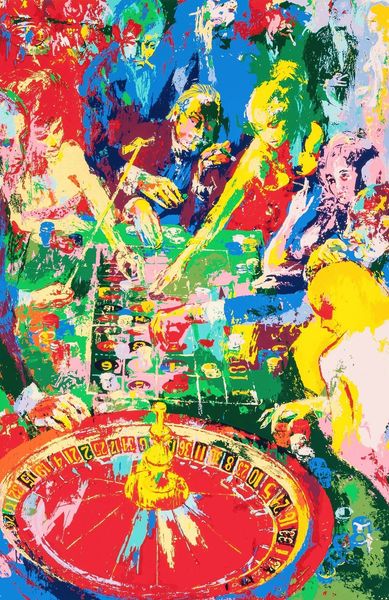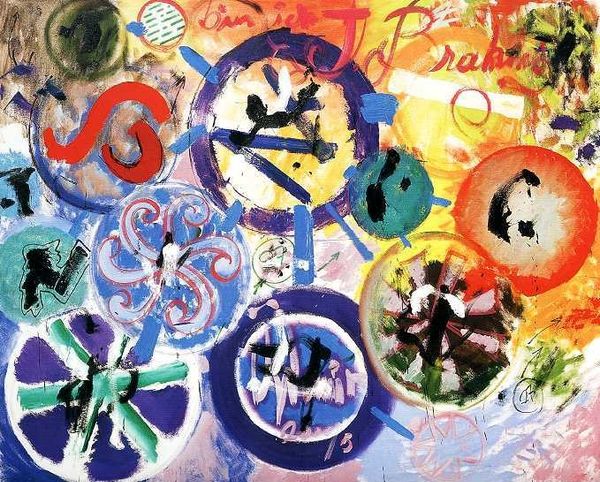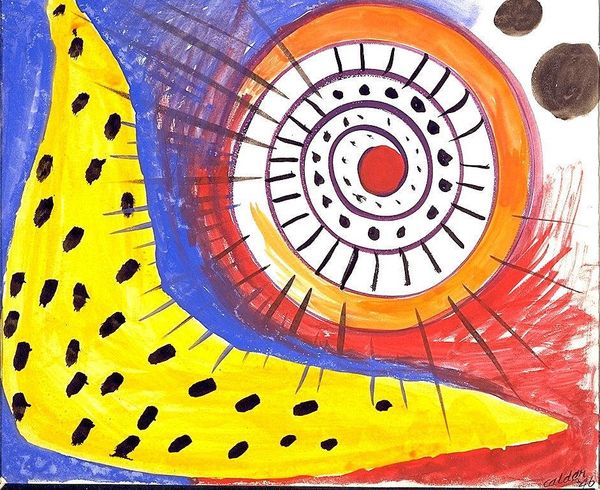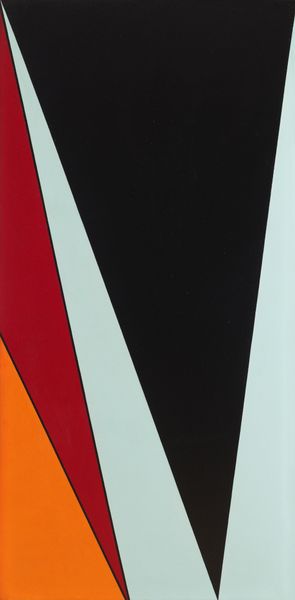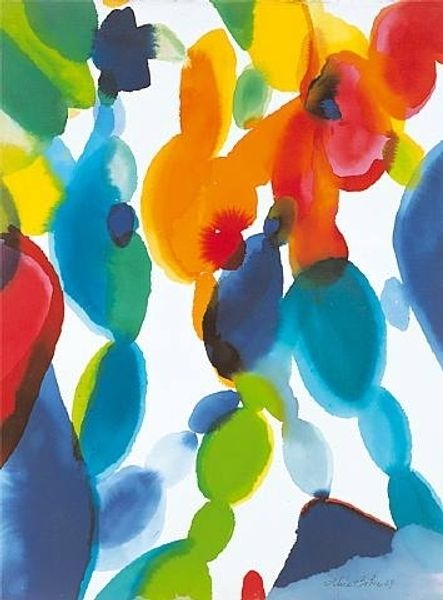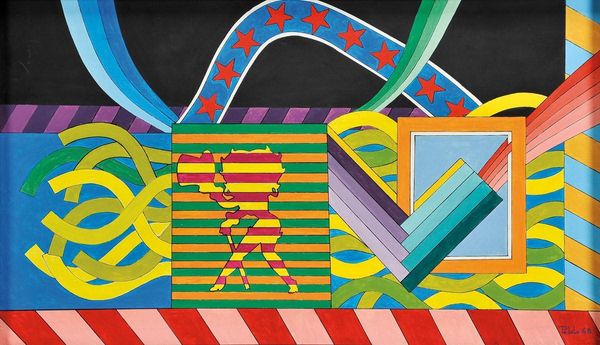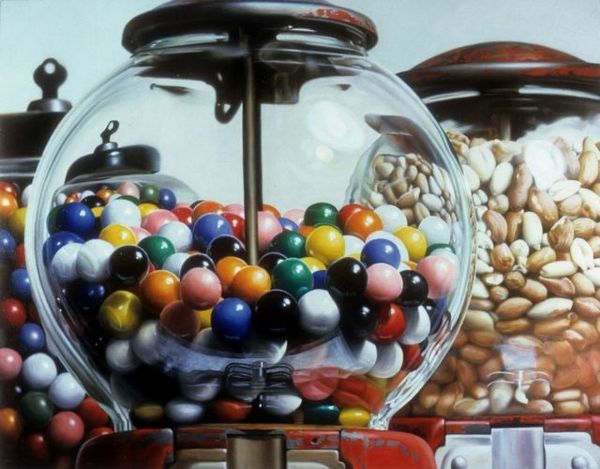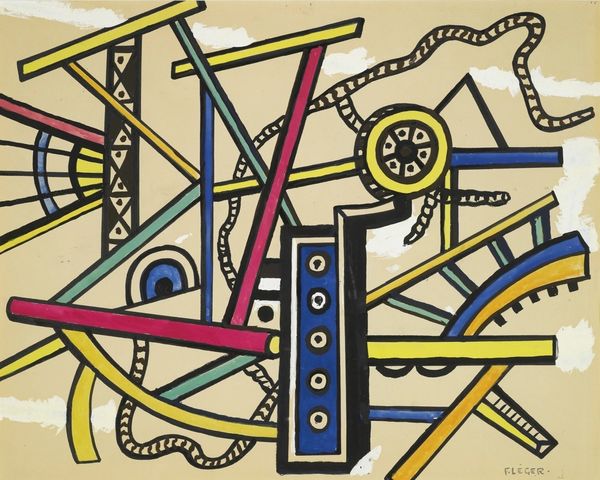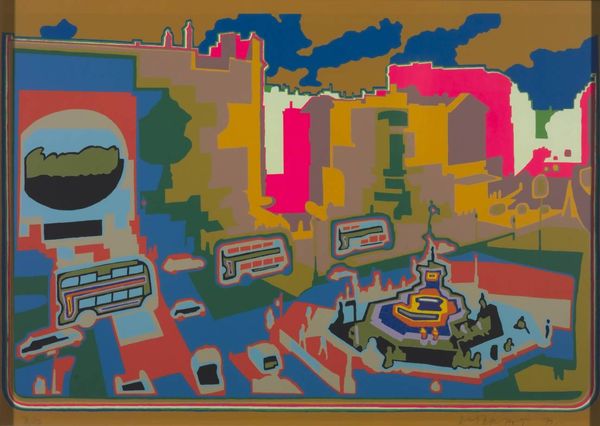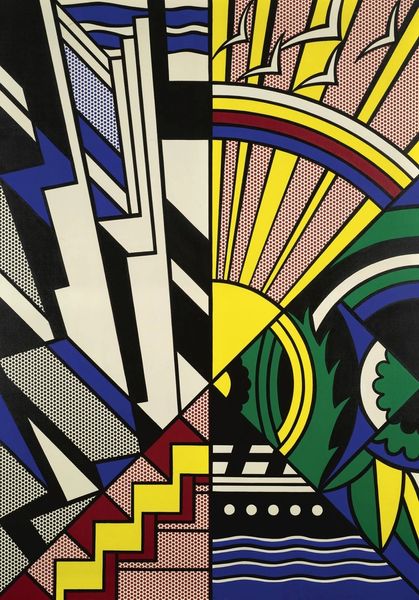
Copyright: Charles Bell,Fair Use
Curator: Looking at Charles Bell’s 1989 painting "Miami Beach" it just feels like summer exploded onto the canvas, doesn’t it? All bright colors and, well, a kind of unapologetic joy. Editor: Absolutely. Immediately, the visual layering—the candy-colored palette, high-gloss sheen, the flat almost printed, images… It's clearly simulating the experience of mass production and consumer desire through very skilled manual labor. I find that dissonance quite potent. Curator: You put it perfectly! It is almost like an illusion—this incredibly tactile object meticulously rendered to resemble something churned out. There is a certain tension there, like longing for something tangible. Do you ever feel that too? That longing to own a dream, maybe one perpetually out of reach, shiny but somehow hollow? Editor: Constantly! This painting’s appeal resides in revealing the process of this "hyperrealism" and, ultimately, critiquing the commodification of leisure, but in a sly and celebratory way. Let us remember, Bell didn’s paint from photographs. There is a whole other level to his paintings of shiny reflections. Curator: He didn’t, did he? A human mind trying to capture something a camera does so easily… almost a Sisyphean task when you consider that his medium is paint. There is a layer of humanity that is just gorgeous, this striving to achieve perfection with inherently imperfect tools. Editor: Which is right in keeping with how commercial design utilizes airbrushing and the perfection afforded by those kinds of material tools. This piece functions as a comment on labor processes more than just a hyperreal representation of commercial images. Curator: It becomes less about perfect mimesis, and more about that slippage, that gap between aspiration and execution. Bell doesn't erase his hand—rather, he showcases it. What begins as a simulacrum of slick consumer imagery gradually transforms into an act of dedication and ultimately becomes moving in the most unlikely way. It kind of echoes what we’ve been saying about the artistic method and process—we can lose sight of the humanity inside production. Editor: Precisely. Its commentary resides in how much this image makes labor processes visible, rather than effacing labor, this speaks to the commodification, rather than deification, of the image itself. It’s no accident this represents a pinball machine and a fantasy!
Comments
No comments
Be the first to comment and join the conversation on the ultimate creative platform.
